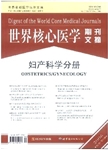尾骨下骶韧带固定术(经阴道后路悬吊术)套管针穿刺路径周围的解剖关系
Anatomic relationships of infracoccygeal sac-ropexy (posterior intravaginal slingplasty) trocar insertion作者机构:Cleveland Clinic Foundation Department of Gynecology and Obstetrics 9500 Euclid Avenue/A81 Cleveland OH 44195 United States
出 版 物:《世界核心医学期刊文摘(妇产科学分册)》 (Core Journal in Obstetrics/Gynecology)
年 卷 期:2006年第2卷第5期
页 面:6-6页
学科分类:1002[医学-临床医学] 1001[医学-基础医学(可授医学、理学学位)] 100211[医学-妇产科学] 100101[医学-人体解剖与组织胚胎学] 10[医学]
主 题:韧带固定术 穿刺路径 髂尾肌 侧阴道 坐骨直肠窝 穿刺点 穿刺针 血管神经束 阴部管 解剖学研究
摘 要:The purpose of this study was to describe the distances of the major bony, vascular, neurologic, and visceral structures to the path of the infracoccygeal sacropexy trocar and to determine the point of trocar entry into the vagina. Study design: Infracoccygeal sacropexy trocars were inserted bilaterally into 6 fresh frozen cadavers. Dissection was performed and the maximal length of the vagina, ischiorectal fossa, and pararectal spaces were measured bilaterally. Mean distances with 95% CIs to important anatomic structures were made from fixed points along the trocar s path. Results: The path of the trocar began dorsal and lateral to the anus, passed through the ischiorectal fossa, iliococcygeus muscle, into the pararectal space, and into the posteriolateral vagina. Along this course, the mean distance (95% CI) to the pudendal vessels at the exit of Alcock s canal was 2.8 cm (2.1 to 3.4 cm) and rectum was 0.5 cm (0.2 to 0.9 cm). The closest inferior rectal vessel was 0.1 cm (0 to 0.3 cm). In the pararectal space, the mean distance to the ischial spine was 2.6 cm (1.7 to 3.5 cm). In 12 of 12 trocar passages, the inferior rectal branches of the pudendal artery and the rectum were within 1 cm or less of the trocar. The mean distance of trocar entry into the vagina was only 4.8 cm (4.3 to 5.4 cm) proximal to the hymenal ring compared with a mean total vaginal length of 8.7 cm (8.0 to 9.3 cm). Conclusion: This anatomic study suggests that the rectum and the inferior rectal branches of the pudendal neurovascular bundle may be at risk of injury during infracoccygeal sacropexy trocar placement. Additionally, this procedure appears to provide support to the mid posterior vaginal wall, not the vaginal apex.



